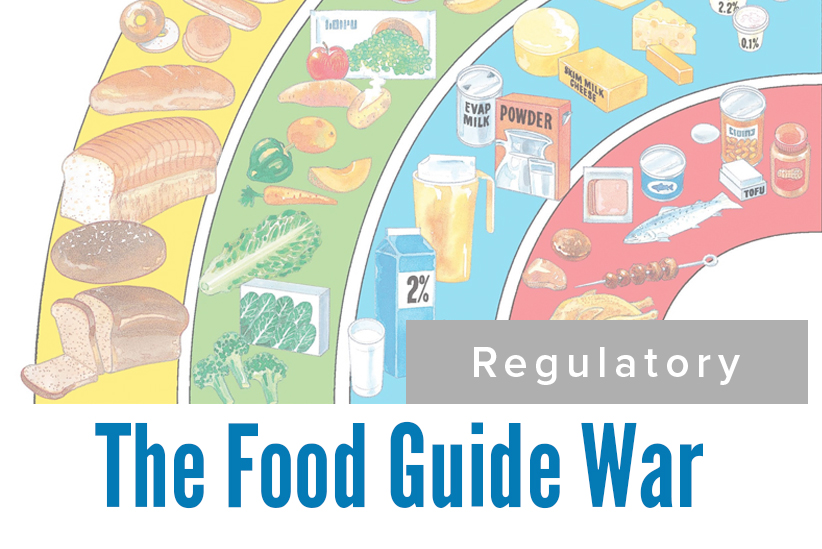Although it was developed over 75 years ago with the intention of Health and Nutrition, Canada’s food guide has been more shaped by politics than anything else. Now, Canada’s current government is set to release an updated Food guide within the coming year and they have committed that this guide will be developed using scientific evidence, and not lobbyist persuasion. Although the official draft has not yet been released, it is said that the focus will be on:
Food allergies | Cultural differences | Encourage plant based diets
In fact, a quick look back on the history of the food guide shows the alarming amount of power lobbyists had on its development.

The original Food Guide (then called “Official Food Rules”) was developed in 1942 during the Great Depression where malnourishment was a huge concern. The guide focused on strengthening young men for battle and also at discouraged Canadians at home (mostly women) from consuming food that needed to be shipped overseas. Basically, it created a guideline of rules for getting by with less. This guideline also included 6 unique food groups: 1. Milk, 2. Fruit, 3. Vegetables, 4. Cereals & Bread, 5. Meat & Fish, 6. Eggs.

In 1944, the “Food Rules” was updated to focus on eating greater quantities. They removed the word “Official” and numerous changes were made to the content. For example, due to the limited supply of organ meat, the reference to these meats was removed. In addition to this, dairy suggestions were lowered as the Department of Agriculture warned of a milk shortage. There was also a push to eat lots of potatoes and buttered bread. This guide had 5 food groups: 1. Milk, 2. Fruit, 3. Vegetables, 4. Cereals & Bread, 5. Meat & Fish.

In 1949 there was a push to avoid excess eating. In put forward the suggestion that more wasn’t always better, something that the past sets of Food Rules has been suggesting.
The 1961 version saw the change of “Food Rules” to “Food Guide”. Food choices broadened and language was more soft and friendly. For the first time, the milk group specified intakes for expectant and nursing mothers.

1977 saw the Landmark Report of the Committee of Diet and Cardiovascular disease advise the government to take action to help prevent diet related disease. As a result, the food guide now included an encouragement to limit fat, sugar, salt and alcohol. Fruits & Vegetables were also combined into one single category with this edition, bringing the groupings to 4.

In 1992 the guide was updated again, this time to include in the title – “Canada’s Food Guide to Healthy Eating”. The problem was, to appease The Canadian Meat Council, The Canadian Ag Marketing Agency and the Dairy Bureau of Canada, Health Canada upped meat and dairy servings even though nutritionists all agreed the amount was much too high for a balanced diet. The guide also encouraged more servings of grains, fruits and vegetables and renamed all 4 categories: 1. Grain products, 2. Vegetables & Fruit, 3. Milk products and 4. Meat & Alternatives.

It has been 10 years since the last revision to Canada’s Food Guide, a guide that was heavily criticized from its release. The criticism lies in the guide focusing too heavily on meat and dairy and being quite lax on sugars and highly processed foods. There is also a fear of promoting weight gain and obesity as the guide suggested eating too much food in general. This is a lot in part to the concerns voiced by dairy and cattle producers, and also the fact that of the 12-person board for the guides development, 4 of the members were big food producers.
Currently with a quarter of Canadians suffering from obesity, the food care guide had evolved from a means to combat malnourishment to instead a means to combat disease, over eating and help Canadians implement a healthier lifestyle. The population heavily relies on this guide as a teaching tool. In fact, the food guide is the second most federal downloaded document. We can only hope that with this adaption the Canadian government sticks to their proposal and implements guidelines that are backed by facts and research and that they do not bend to the wishes of lobbyists and other parties.




